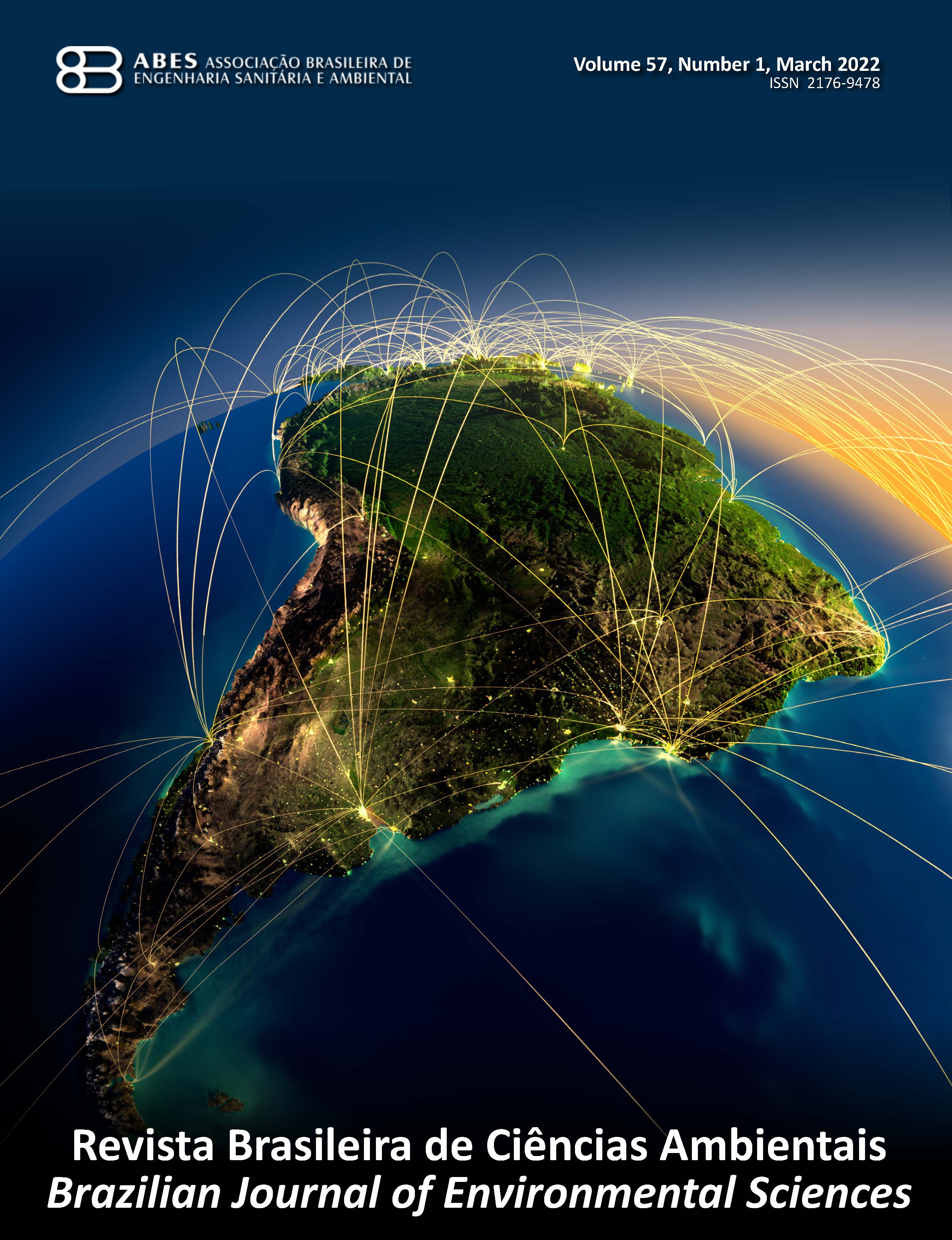Animal welfare assessment in nine dog shelters of southern Brazil
DOI:
https://doi.org/10.5327/Z217694781197Keywords:
shelter medicine; population control; ethology; abandonment; relinquishment.Abstract
The present study has tested the Shelter-Quality Protocol (SQ) and its applicability in nine long-term dog shelters in the Curitiba metropolitan area, State of Paran , southern Brazil. Welfare indicators were scored on three different levels including shelter, pen and dogs. Data were qualitatively analyzed, presenting an average of 66.67 ( 27.63) allocated dogs per shelter, receiving only dry food, with meal frequencies varying from once (44.4%), twice a day (33.3%), and ad libitum (22.2%). Water was available ad libitum in 98.5% of pens and was clean in (89.5%) of shelters. Most of the shelters grouped the dogs by size. Animals were kept indoors (41.0%) or entirely outdoors with only close movable shelters (41.3%), from which 78.5% had materials that could hurt the animals. None of the dogs were panting, crowding, or had any stereotypy behavior. No cough, swelling, and ectoparasites were observed. Animals were in satisfactory body-score condition and clean; no lameness was observed. In the human-animal relationship test, 15.3% of animals showed fearful and aggressive reactions. Hence, the level of shelter-quality was feasible and provided relevant information about the Brazilian dog shelter welfare. However, it is important in future studies to include and adopt additional indicators to gather other relevant aspects of dogs’ welfare, such as health management, environmental enrichment, dogs’ socialization, people involved in the chain, rate of adoption, and turnover of dogs.
Downloads
References
Arruda, E.C.; Garcia, R.C.M.; Oliveira, S.T., 2020. Bem-estar dos cães de abrigos municipais no estado do Paraná, Brasil, segundo o protocolo Shelter Quality. Arquivos Brasileiros de Medicina Veterinária e Zootecnia, v. 72, 346-354. https://doi.org/10.1590/1678-4162-11323.
Arruda, E.C..; Noronha, J.; Molento, C.F.M.; Garcia, R.C.M.; Oliveira, S.T., 2019. Características relevantes das instalações e da gestão de abrigos públicos de animais no estado do Paraná, Brasil, para o bem-estar animal. Arquivos Brasileiros de Medicina Veterinária e Zootecnia, v. 71, 232-242. https://doi.org/10.1590/1678-4162-10224.
Barnard, S.; Pedernera, C.; Candeloro, L.; Ferri, N.; Velarde, A.; Dalla Villa, P., 2016. Development of a new welfare assessment protocol for practical application in long-term dog shelters. Veterinary Record, v. 178, 18. https://doi.org/10.1136/vr.103336.
Berteselli, G.V.; Arena, L.; Candeloro, L.; Villa, P.D.; De Massis, F., 2019. Interobserver agreement and sensitivity to climatic conditions in sheltered dog’s welfare evaluation performed with welfare assessment protocol (Shelter Quality protocol). Journal of Veterinary Behavior, v. 29, 45-52. https://doi.org/10.1016/j.jveb.2018.09.003.
Brasil. 1998. Lei nº 9.605, de 12 de fevereiro de 1998. Sanções penais e administrativas derivadas de condutas e atividades lesivas ao meio ambiente, e dá outras providências. Diário Oficial da União, Brasília, Seção 1, p. 29.
Brasil. 2020. Lei nº 14.064, de 29 de setembro de 2020. Penas cominadas ao crime de maus-tratos aos animais quando se tratar de cão ou gato. Diário Oficial da União, Brasília.
Brasil. Ministério da Saúde. 2014. Portaria nº 1.138, de 23 de maio de 2014. Define as ações e os serviços de saúde voltados para vigilância, prevenção e controle de zoonoses e de acidentes causados por animais peçonhentos e venenosos, de relevância para a saúde pública. Diário Oficial da União, Brasília, Seção 1, p. 83.
Brasil. Ministério da Saúde. Secretaria de Vigilância em Saúde. Departamento de Vigilância das Doenças Transmissíveis. Coordenação-Geral de Doenças Transmissíveis. 2016. Manual de vigilância, prevenção e controle de zoonoses: normas técnicas e operacionais. Ministério da Saúde, Brasília.
Cambridge Declaration. São Leopoldo: IHU, 2012 (Accessed May 9, 2021) at:. http://fcmconference.org/.
Catapan, D.C.; Villanova Junior, J.A.; Weber, S.H.; Mangrich, R.M.V.; Szczypkovski, A.D.; Catapan, A.; Pimpão, C.T., 2015. Percepção e atitudes de amostra populacional sobre guarda responsável, zoonoses e cães em vias públicas. Revista Brasileira de Ciência Veterinária, v. 22, 92-98. https://doi.org/10.4322/rbcv.2015.358.
Clay, L.; Paterson, M.; Bennett, P.; Perry, G.; Rohlf, V.; Phillips, C.J.C., 2020. In defense of canine behavioral assessments in shelters: Outlining their positive applications. Journal of Veterinary Behavior, v. 38, 74-81. https://doi.org/10.1016/j.jveb.2020.03.005.
Dowgray, N.; Shaw, S., 2018. BSAVA Manual of Canine and Feline Shelter Medicine. British Small Animal Veterinary Association.
Gunter, L.M.; Feuerbacher, E.N.; Gilchrist, R.J.; Wynne, C.D.L., 2019. Evaluating the effects of a temporary fostering program on shelter dog welfare. PeerJ, e6620. https://doi.org/10.7717/peerj.6620.
Kwok, Y.K.E.; Von Keyserlingk, M.A.G.; Sprea, G.; Molento, C.F.M., 2016. Human-animal interactions of community dogs in Campo Largo, Brazil: a descriptive study. Journal of Veterinary Behavior: Clinical Applications and Research, v. 13, 27-33. https://doi.org/10.1016/j.jveb.2016.03.006.
Miller, L.; Zawistowski, S., 2014. Shelter medicine for veterinarians and staff. Wiley-Blackwell, Iowa.
Mota-Rojas, D.; Calderón-Maldonado, N.; Lezama-García, K.; Sepiurka, L.; Garcia, R.C.M., 2021. Abandonment of dogs in Latin America: Strategies and ideas. Veterinary World, v. 14, 2371-2379. https://doi.org/10.14202%2Fvetworld.2021.2371-2379.
Paraná. 2003. Lei nº 14.037, de 20 de março de 2003. Código estadual de proteção aos animais. Palácio do Governo, Curitiba.
Paraná. 2012. Lei nº 17.422, de 18 de dezembro de 2012. Controle ético da população de cães e gatos no estado do Paraná. Palácio do Governo, Curitiba.
Polgár, Z.; Blackwell, E.J.; Rooney, N.J., 2019. Assessing the welfare of kennelled dogs: a review of animal-based measures. Applied Animal Behaviour Science, v. 213, 1-13. https://doi.org/10.1016/j.applanim.2019.02.013.
Prefeitura de Curitiba. Agência de Notícias. 2016. Animais em situação de risco terão centro de referência. Prefeitura de Curitiba, Curitiba (Accessed May 9, 2021) at:. http://www.curitiba.pr.gov.br/noticias/animais-em-situacao-de-risco-terao-centro-de-referencia/40674.
Raudies, C.; Waiblinger, S.; Arhant C., 2021. Characteristics and welfare of long-term shelter dogs. Animals, v. 11, 194. https://doi.org/10.3390/ani11010194.
Rowan, A.; Kartal, T., 2018. Dog population & dog sheltering trends in the United States of America. Animals, v. 8, 68. https://doi.org/10.3390%2Fani8050068.
Serpell, J., 2016. The domestic dog: its evolution, behavior and interactions with people. Cambridge University Press, Cambridge.
Smith, L.M.; Hartmann, S.; Munteanu, A.M.; Villa, P.D.; Quinnell, R.J.; Collins, L.M., 2019. The effectiveness of dog population management: a systematic review. Animals, v. 9, 1020. https://doi.org/10.3390%2Fani9121020.
Welfare Quality, 2009. Welfare Quality® assessment protocol for cattle. Welfare Quality® Consortium: Lelystad, The Netherlands.
World Organization for Animal Health (OIE), 2018. Stray dog population control. OIE (Accessed February 7, 2021) at.: http://www.oie.int/fileadmin/Home/eng/Health_standards/tahc/current/chapitre_aw_stray_dog.pdf.
Published
How to Cite
Issue
Section
License
Copyright (c) 2022 Revista Brasileira de Ciências Ambientais

This work is licensed under a Creative Commons Attribution 4.0 International License.


























